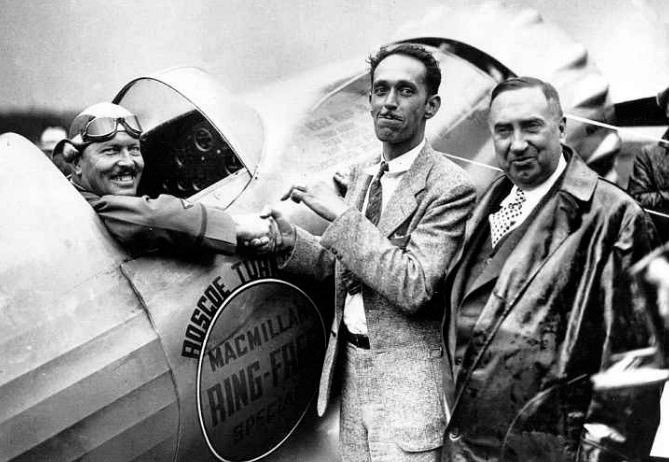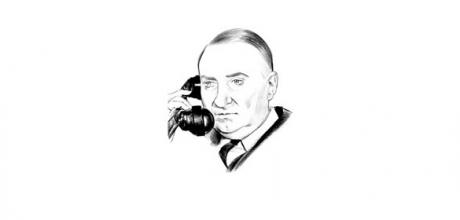Vincent Hugo Bendix 1881-1945 - Financially volatile hero of braking and sponsor of aviation
He was called ‘The King of Stop and Go’, although, to be chronologically precise, he should have been the ‘King of Go and Stop’ – his ‘go’ invention preceding the ‘stop’. Vincent Bendix’s whole life seemed to evolve on a stop-and-go basis. He was a big man, bighearted and a big spender. He made a fortune, spent a fortune and was no stranger to bankruptcy, divorce and ill-judged investments.
Gone but not forgotten
Words Delywn Mallett. Image Alamy.
From humble beginnings he was, by the early 1930s, head of one of the world’s foremost automotive companies, with 15 factories and holder of 15,500 patents. He was president of the Society of Automotive Engineers, a Knight of Sweden’s Order of the North Star, and had been awarded the Légion d’Honneur. By the end of the ’30s he was bankrupt.
Vincent Hugo Bendix was born in 1881 in Moline, Illinois, son of a Swedish Methodist Episcopal minister who had changed the family name, Bengston, to Bendix when he arrived in the USA. The family soon moved to Chicago, where young Victor showed more than a passing interest in engineering, apparently inventing a chainless bicycle when only 13.
At 16 he left home and moved to New York, where he gained a grounding in electricity while working in the maintenance department of a hospital. Assorted jobs followed until, in 1901, he started working for Glen Curtiss, a bicycle shop proprietor branching out into motorcycles and who would later find fame as one of the fathers of American aviation.
Bendix started to build his own bike and took evening classes in engineering. He married his first wife in 1902 and in 1907 moved back to Chicago as sales manager for the Holsman Automobile Company, a leading maker of auto buggies. Known as ‘high wheelers’ because of their spindly large-diameter wheels, they looked like a carriage without a horse. Bendix designed his own buggy and bought the Triumph Motor Company of Cragin, Illinois, to produce it. The Bendix Motor Buggy was his first success, selling 7000. It was also his first brush with failure: the company went bust. Chastened but undaunted, he set about developing his idea for a mechanical starter.
The key component was a triple-thread screw, not an easy item to produce, but in 1913 he found a supplier in New York who made exactly what he required. He contracted it to make what would universally become known as the ‘Bendix Drive’ and set about peddling his ‘Mechanical hand that cranks your car’.
Chevrolet adopted it and had installed 5000 by the end of 1914. By 1919 nearly every car on the US market was fitted with a Bendix starter and, with 1.5 million sold, Vincent was rich. In 1922 Bendix was devastated when his father was knocked down and killed on a Chicago street, the accident blamed on the vehicle’s inadequate brakes. He vowed to provide cars with a better braking system and, on a visit to France in 1924, bought the US licence for the four-wheel system invented by Henri Perrot. By 1928 the Bendix Corporation was producing 3.6 million brakes per annum.
With money flowing in he went on a buying spree, amassing dozens of companies, including Scintillamagnetos and Stromberg Carburetors. The buying spree was not restricted to businesses. He acquired an ocean-front estate in Palm Beach, a swish apartment in New York, paid $3,000,000 for the largest lakeside mansion in Chicago (then soon lost a million when he sold it) and ploughed a fortune into remodelling the South Bend ex-Studebaker estate, which was renamed Chateau Bendix. He also paid two Chinese architects $250,000 to recreate the Golden Pavilion of Jehor at the Chicago World’s Fair and a second that he sent to Stockholm. His divorce from his second wife in 1932 reportedly cost him $2,000,000.
Also in 1932 Bendix set up the Steel Wheel Corporation, really a front to allow the secret creation of an aerodynamic front-wheel-drive saloon. A drivable prototype was completed in 1934, which he touted around European manufacturers. Citroën, Peugeot, Renault, Fiat and Rootes all declined.
Although Bendix avoided flying, he recognised the increasing importance of air travel and in 1929 renamed his company as the Bendix Aviation Corporation. He sponsored the Bendix Trophy, a coast-to-coast race to encourage the development of faster and safer aircraft. One of Bendix Aviation’s most notable contributions to flying was the Bendix- Stromberg pressure carburettor that became dominant on WW2 US aircraft.
Bendix should have been on a roll but his profligacy precipitated a fall from grace. He had gradually sold all his shares in the corporation he had founded, and in 1939 was declared bankrupt with $14million of debt. A sale of his personal assets raised $1million. General Motors also tired of his lack of self-control and after acquiring enough stock they eased him out of day-to-day control of the company. He resigned in 1942 but, apparently unstoppable, embarked on yet another venture, starting Bendix Helicopter Inc in 1944.
Vincent Bendix abruptly ran out of ‘go’ at his New York home on 27 March 1945, struck down by a coronary thrombosis.
Ironically, the invention that made his name best-known to the general public really had nothing to do with him. Two employees in a subsidiary had persuaded him to lend his name to their invention in return for shares, but early Bendix automatic washing machines attracted so many warranty claims that he had to take out advertising, pointing out that they were not in fact made by Bendix Aviation.

Vincent Bendix, on right in leather coat, with 1935 Bendix Trophy Race winner Benny Howard (centre), and second-placed Roscoe Turner in his Wedell- Williams Model 44 racer.


